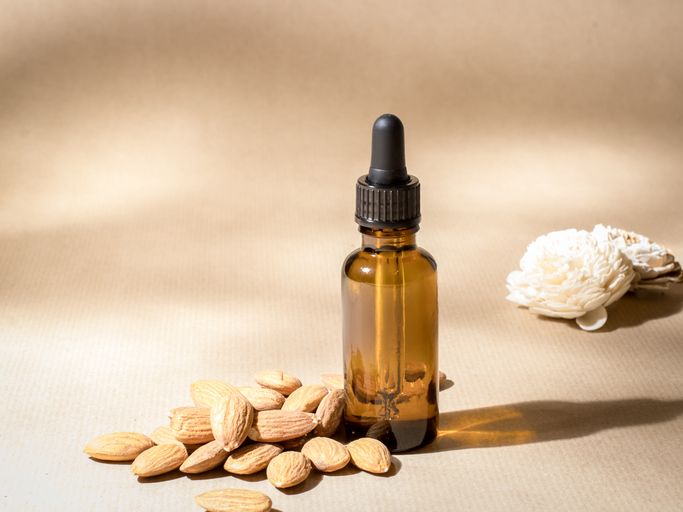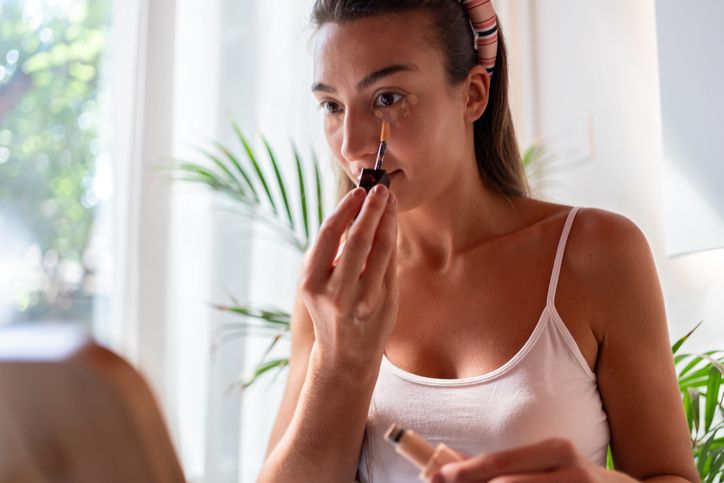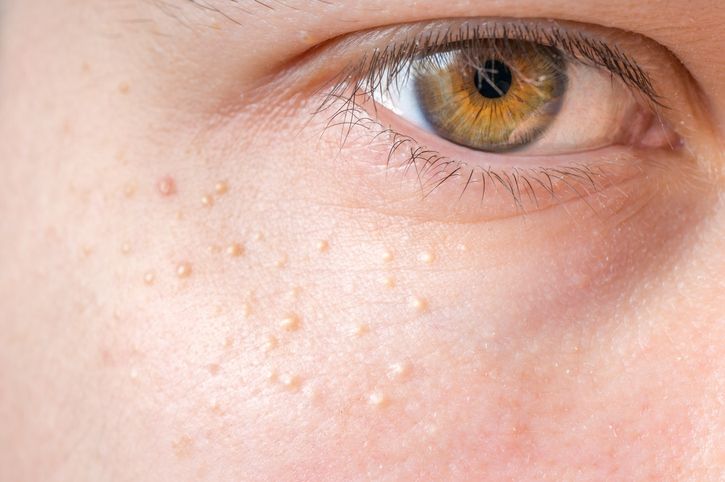- Home
- Trend
- Weight Loss Strategies
- Acne Tips
- Hair Health Information
- Blemish Removal Tips
- Acne Scar Removal Tips
- Muscle Building Techniques
- Intimate Care Tips
- Postpartum Intimate Care
- Eye Bags Wiki
- Tips for Face Slimming
- Secret of Permanent Hair Removal
- Breast Enlargement Tips
- Cure to Snoring
- Marionette Lines
- Skin-Tightening Secrets

免費體驗
Acne Scarring Treatment
1 Minute Self-Registration
Date should not be before minimal date
In Singapore, this vibrant city with its tropical climate, sun-kissed residents often face common skin concerns such as hyperpigmentation, acne scars, and premature ageing. But fear not, as the solution to unveil your radiant skin lies in the advanced technology of chemical peel treatments.
1
Why Chemical Peels?
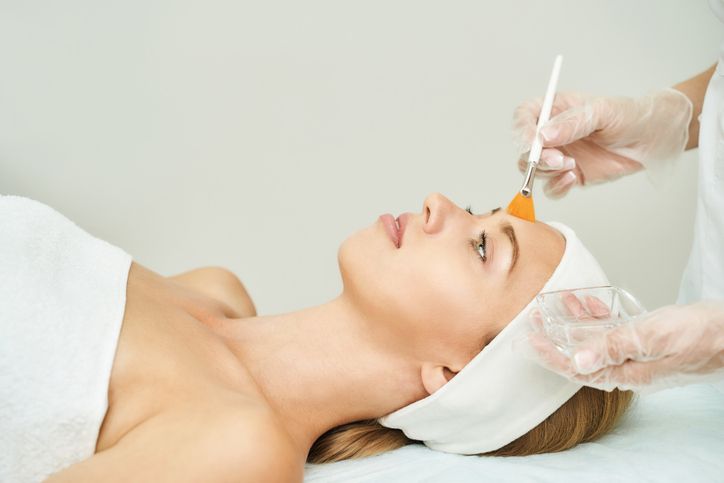
Residents seeking to improve the appearance of their skin can turn to chemical peel treatments. These versatile sessions not only target concerns like hyperpigmentation and premature ageing but also work wonders for those grappling with acne scars. In some cases, chemical peels can even be used to address active acne, offering a comprehensive solution to various skin woes.
How do they work?
Chemical peels operate by using a carefully selected blend of acids to exfoliate the skin gently. This process removes dead skin cells, revealing the fresh, youthful layer beneath. The result? A smoother, more even complexion that radiates with natural beauty.
2
Tailored Treatments for Various Concerns
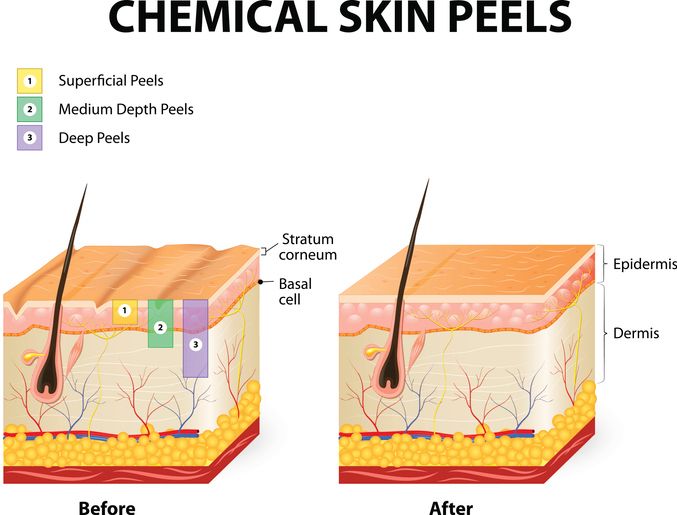
Chemical peels come in different strengths, catering to a range of skin conditions and concerns. For those with sensitive skin or mild scarring, superficial peels might be the perfect choice. Medium and deep peels delve deeper, making them ideal for addressing more pronounced issues like atrophic acne scars.
Mid and deep chemical peels are two different types of chemical peels that vary in terms of their depth of penetration and the extent of skin damage they address. Both types of peels involve the application of chemical solutions to the skin to exfoliate the outer layers and promote skin renewal. Here are the key differences between mid and deep chemical peels:
1. Depth of Penetration
Mid Chemical Peel: This type of peel penetrates the outer and middle layers of the skin (epidermis and upper dermis). It is more intense than a superficial peel but not as deep as a deep peel.
Deep Chemical Peel: A deep peel penetrates into the deeper layers of the skin, reaching the middle to lower dermis. It causes a more significant injury to the skin compared to a mid peel.
2. Purpose and Indications
Mid Chemical Peel: Mid peels are typically used to treat a range of skin concerns, including fine lines, wrinkles, sun damage, and uneven pigmentation. They provide more noticeable results than superficial peels but may require multiple treatments for optimal outcomes.
Deep Chemical Peel: Deep peels are usually reserved for more severe skin issues, such as deep wrinkles, pronounced sun damage, or scars. They can produce dramatic results but are associated with a longer recovery period.
3. Recovery Time
Mid Chemical Peel: Recovery time for a mid peel is shorter compared to a deep peel. Patients may experience redness, swelling, and peeling, but these effects are typically milder and resolve within a week or two.
Deep Chemical Peel: Deep peels involve a more extended recovery period. The skin may take several weeks to heal, and during this time, patients may experience significant peeling, redness, and swelling.
- How Can I Make Acne Scar On Face Disappear? Remove Acne Scars With 5 Simple Steps
- How Effective Is Acne Scar Creams with Acid? A Must Read For People With Sensitive Skin
- 5 Different Types Of Acne Scars You Have To Know: Discover Causes And Solutions For Clear Skin
- Doll Up For Flawless Complexion: 5 Ways To Cover Acne Scars
3
Key Players in Chemical Peel Treatment
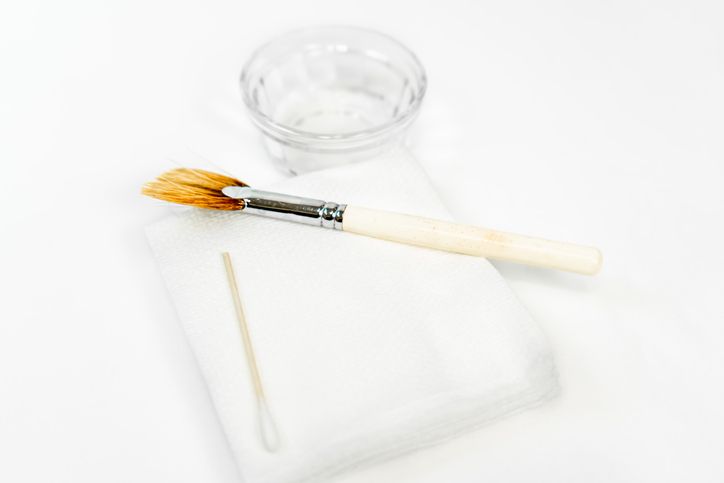
1. Alpha Hydroxy Acids (AHAs)
Role: AHAs are gentle acids derived from fruits and milk. They play a crucial role in chemical peels by contributing to the exfoliation process.
Benefits: These acids enhance the skin's texture and tone by promoting the shedding of dead skin cells. AHAs are known for their ability to improve the appearance of fine lines, sun damage, and uneven pigmentation.
Suitability: AHAs are generally suitable for various skin types, and their mild nature makes them a popular choice for individuals with sensitive skin.
2. Salicylic Acid Peels
Ideal for Acne-Prone Skin: Salicylic acid is particularly effective for individuals with acne-prone skin. It works wonders in treating active acne and addressing superficial acne scarring.
Mechanism of Action: Salicylic acid penetrates deep into the pores, exfoliating the inside of the follicles. This helps to unclog pores, reduce inflammation, and prevent new acne breakouts.
Result: The use of salicylic acid in chemical peels can lead to clearer and smoother skin for those struggling with acne-related issues.
3. Glycolic Acid Peels
Versatility: Glycolic acid is a versatile alpha hydroxy acid derived from sugarcane. It is widely used in chemical peels due to its effectiveness in removing dead skin cells.
Benefits: This acid helps reveal a fresh and vibrant complexion by promoting exfoliation and stimulating collagen production. Glycolic acid is known for its ability to address issues like dullness, fine lines, and hyperpigmentation.
Consideration: While effective, individuals with sensitive skin should be cautious, as glycolic acid can be more potent than some other AHAs.
4. Lactic Acid
Gentle Exfoliation: Lactic acid, derived from milk, is renowned for its gentle exfoliating properties. It provides a mild yet effective peel, making it suitable for individuals with sensitive skin.
Benefits: Lactic acid helps improve skin texture, reduce the appearance of fine lines, and address mild hyperpigmentation. It is often chosen for those seeking a more subtle exfoliation.
Suitability: Due to its mild nature, lactic acid is considered a good option for individuals with sensitive skin who may not tolerate stronger chemical peels.
In summary, each of these key players in chemical peels offers unique benefits and is tailored to address specific skin concerns. The choice of acid depends on individual skin types, concerns, and the desired level of exfoliation.
4
Considerations for Different Skin Tones
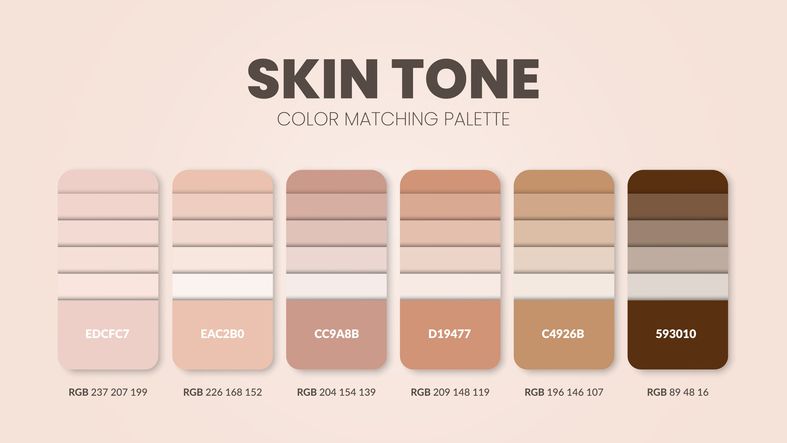
Chemical peels are versatile treatments suitable for individuals with various skin tones, including darker complexions. However, when choosing a chemical peel, it is crucial to consider the specific needs of different skin tones to achieve optimal results while minimising the risk of pigmentation changes.
The selection of the right peel strength and acid type is essential to ensure that the chemical peel is effective without causing unwanted side effects, such as hyperpigmentation. Using milder peels with gentler acids is often recommended for individuals with darker skin tones to minimise the risk of post-inflammatory hyperpigmentation, or else, you may encounter unpleasant side effects.
Potential Risks and Side Effects
Mid Chemical Peel Lower risk: Mid peels are generally considered safer with a lower risk of complications compared to deep peels. Potential complications: While complications are less common, there is still a risk of pigmentation changes, particularly in individuals with more melanin in their skin. Infection and scarring are also possible but occur less frequently compared to deep peels. Suitability: Mid peels are often a preferred choice for individuals with a variety of skin tones due to their effectiveness with a lower risk profile.
Deep Chemical Peel Higher risk: Deep peels involve a more significant level of skin penetration, leading to a higher risk of complications. Changes in skin colour: The risk of changes in skin colour, including hyperpigmentation or hypopigmentation, is more pronounced with deep peels, particularly in individuals with darker skin tones. Scarring and infection: The deeper nature of the peel increases the risk of scarring and infection, making deep peels less common and reserved for specific cases where the benefits outweigh the potential drawbacks. Consideration for skin tones: Due to the increased risk of pigmentation changes, individuals with darker skin tones may need careful evaluation and consideration before opting for deep chemical peels.

免費體驗
Acne Scarring Treatment
1 Minute Self-Registration
Date should not be before minimal date
5
Can A Person With Sensitive Skin Do Chemical Peel for Acne Scars?

People with sensitive skin can undergo chemical peels, but it requires careful consideration and a cautious approach. Sensitive skin is more prone to irritation and may react differently to chemical peels compared to other skin types. Here are some important considerations for individuals with sensitive skin considering chemical peels:
1. Choose the Right Type of Peel
Opt for milder acids such as lactic acid or mandelic acid, which are generally better tolerated by sensitive skin. Avoid harsh acids like phenol or high concentrations of glycolic acid, as they may cause excessive irritation.
2. Patch Testing
Conduct a patch test before undergoing a full chemical peel to assess how your skin reacts to the chosen acid. Apply a small amount of the peel solution to a discreet area and observe for any signs of redness, itching, or irritation.
3. Professional Guidance
Consult with a skincare professional, such as a dermatologist or licensed esthetician, with experience in treating sensitive skin. A professional can evaluate your skin type, assess its sensitivity, and recommend an appropriate type and strength of chemical peel.
4. Gentle Formulas and Lower Concentrations
Use chemical peels with lower concentrations of acids to minimise the risk of adverse reactions. Also, consider superficial or mild peels rather than more aggressive options.
5. Preparation and Aftercare
Follow pre-peel and post-peel care instructions provided by your skincare professional to optimise results and minimise potential irritation. Use gentle skincare products and avoid abrasive or harsh ingredients in the days leading up to and following the peel.
6. Gradual Approach
Consider a series of milder peels rather than a single aggressive treatment to allow your skin to gradually acclimate to the peeling process.
7. Monitor for Reactions
Be vigilant for any signs of increased sensitivity or adverse reactions during and after the peel. If you experience persistent redness, swelling, or discomfort, consult your skincare professional promptly.
8. Postpone Treatment During Flare-Ups
Avoid chemical peels during periods of heightened skin sensitivity, such as during a flare-up of conditions like eczema or rosacea.
It's important to note that sensitivity can vary among individuals, and what works for one person may not be suitable for another. Professional guidance and an individualised approach are crucial to ensure a safe and effective chemical peel experience for individuals with sensitive skin. Always communicate openly with your skincare professional about your skin concerns and any past experiences with skincare treatments.
6
Aftercare Tips for Post Chemical Peel Sessions
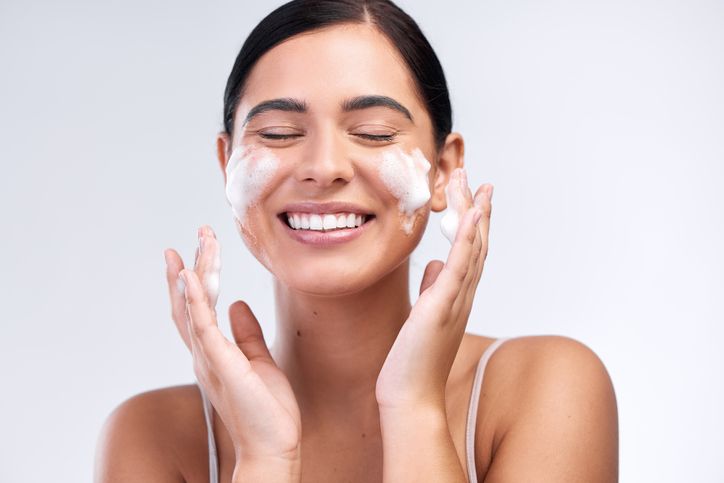
After undergoing a chemical peel for acne scars, it's essential to follow a proper post-care routine to promote healing, minimise irritation, and optimise results. Here are some suitable aftercare products for individuals who have undergone chemical peels for acne scars:
Gentle Cleanser
Use a mild, fragrance-free cleanser to cleanse the skin. Avoid harsh or abrasive cleansers that may cause irritation. Consider a hydrating cleanser to maintain the skin's moisture balance.
Hyaluronic Acid Serum
Hyaluronic acid helps to hydrate the skin and retain moisture. A serum containing hyaluronic acid can be beneficial for maintaining skin hydration, especially after a peel.
Moisturizer
Choose a non-comedogenic, fragrance-free moisturiser to keep the skin hydrated and help with the healing process. Look for ingredients like ceramides and glycerin.
Sunscreen
Sun protection is crucial after a chemical peel, as the skin becomes more sensitive to UV rays. Use a broad-spectrum sunscreen with SPF 30 or higher. Physical sunscreens containing zinc oxide or titanium dioxide may be less irritating.
Antioxidant Serum
An antioxidant serum, containing ingredients like vitamin C, can help protect the skin from free radical damage and support the healing process.
Gentle Exfoliants (if recommended)
Depending on your skincare professional's advice, you may use a mild exfoliant to help with the shedding of dead skin cells. Avoid harsh scrubs and opt for chemical exfoliants with ingredients like alpha hydroxy acids (AHAs) or beta hydroxy acids (BHAs).
Topical Retinoids (if recommended)
If your skincare professional recommends it, the use of a topical retinoid like tretinoin or retinol may aid in collagen production and further improve skin texture.
Barrier Repair Cream
Consider a barrier repair cream containing ingredients like ceramides and fatty acids to support the skin's natural barrier function and reduce moisture loss.
Cooling and Soothing Products
Products containing ingredients like aloe vera or chamomile can have a soothing effect on the skin and help reduce redness and inflammation.
Non-Irritating Cleansing Cloths
For cleansing, consider using soft cleansing cloths that do not tug or irritate the skin.
7
Closing Thoughts

Whether you're dealing with acne scars, hyperpigmentation, or just seeking a skin refresh, chemical peeling is indeed a friendly and effective solution. While attempting chemical peels at home can be a convenient solution, sometimes it's best to leave professional treatments for the specialist for best results. With the aftercare tips and info you learned in this piece, you can start embarking on the journey to radiant skin by choosing the right kind of treatment!

免費體驗
Acne Scarring Treatment
1 Minute Self-Registration
Date should not be before minimal date
FAQ

1. How effective are chemical peels for treating acne scars?
Chemical peels can be effective in reducing the appearance of acne scars by promoting skin exfoliation and renewal. Superficial chemical peels are commonly used for milder scars, while deeper peels may be recommended for more severe cases.
2. What are superficial chemical peels, and how do they help with acne scars?
Superficial chemical peels are mild exfoliating treatments that target the outer layers of the skin. They can help improve the texture of the skin, reduce hyperpigmentation associated with acne scars, and promote a more even complexion. These peels are suitable for less severe forms of scarring.
3. Can chemical peels address ice pick acne scars?
Superficial chemical peels may provide some improvement for shallow ice pick acne scars by promoting collagen production and skin renewal. However, for deeper ice pick scars, more aggressive treatments like laser therapy or microneedling may be recommended for better results.
4. Are deep scars treatable with chemical peels, or are other options more suitable?
While superficial and mid-level chemical peels can offer benefits for certain types of acne scars, deep scars may require more intensive treatments. Procedures such as laser resurfacing, dermal fillers, or surgical interventions may be more effective for addressing deep scars.
5. How does the skin heal after a chemical peel for acne scars, and what is the recovery process like?
After a chemical peel, the skin undergoes a healing process that includes redness, peeling, and increased sensitivity. Superficial peels generally have a shorter recovery period compared to deeper peels. Adequate post-care, including moisturising and sun protection, is crucial to support the healing process and achieve optimal results.






